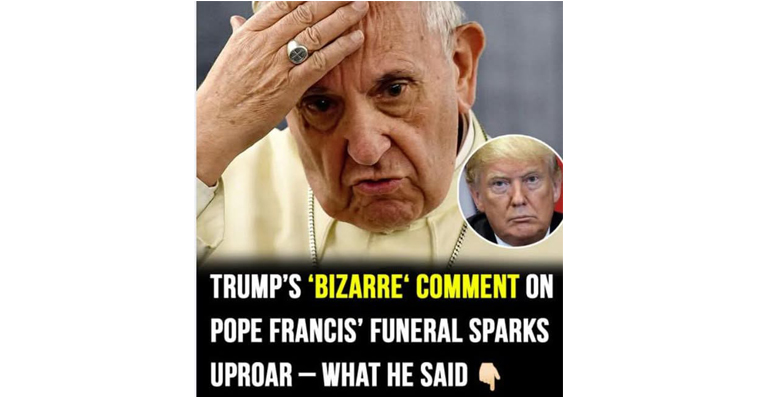And as the world prepares to send Pope Francis farewell on Saturday, the former US president managed to spark controversy once more. Trump revealed his plans to attend the Pope’s burial in a statement that sparked outrage on social media — but it wasn’t the announcement that grabbed attention. It was how he said it. Like many other foreign leaders, Donald Trump was quick to express his sorrow upon Pope Francis’ death on April 21.
The US president issued a brief message on his social media platform, Truth Social, writing, “Rest in peace, Pope Francis! “May God bless him and everyone who loved him!” Trump also used Truth Social to announce that US flags should be flown at half-staff as a show of respect for “the memory of His Holiness Pope Francis.” The relationship between Donald Trump and Pope Francis began on a positive note, despite disagreements.

Long before Trump took office, he had nothing but positive things to say about the newly elected Pope. “The new Pope is a humble man, very much like me, which probably explains why I like him so much!” Trump tweeted in December of that year. It was classic Trump: equal parts flattery and self-promotion. But the honeymoon did not last. Their public personas rose, and so did their differences.
What began as flattery quickly turned into one of the most unusual and contentious interactions between a US president and the head of the Catholic Church. Trump and Pope Francis’ time on the world stage was defined by major ideological schisms, particularly over immigration and social justice. In 2016, the Pope famously criticized Trump’s border wall plans, saying, “A person who thinks only about building walls, wherever they may be, and not building bridges, is not Christian.” Trump, in usual manner, responded, calling it “disgraceful” for a religious leader to question someone’s religion.
Face-to-face meetings. During Trump’s 2017 visit to the Vatican, the two met in person. Trump reflected on the event, saying, “He is something. We had a terrific meeting!” But the tensions did not subside. The two remained estranged throughout Trump’s term and following his return to government in 2025. Pope Francis called the increased push for mass deportations a “disgrace” and warned that any strategy “built on force rather than human dignity begins badly and will end badly.”
While Trump delivered a brief farewell, others were more thoughtful. Vice President JD Vance, a devout Catholic who met with the Pope soon before his death, posted a moving tribute on X: “I just learnt of Pope Francis’ passing. My heart goes out to the millions of Christians around the world who adored him.” Vance recounted their final meeting, noting that the Pope was plainly ill, but said he’d always remember the Pope for a specific message: “I’ll always remember him for the following homily he gave in the very early days of COVID. It was absolutely gorgeous. “May God rest his soul.”
A wine tasting in the Vatican City? Despite their ideological differences, Donald Trump and his wife, Melania, will attend the Pope’s funeral, marking the president’s first foreign trip of his second term. But it wasn’t just that Trump declared he’d be attending the burial; it was how he said it that drew the most attention. Here is what he wrote: “Melania and I will attend Pope Francis’ funeral in Rome.” We are looking forward to being there!”

The internet reacted quickly, particularly on X (previously Twitter), where users criticized the US president for being tone deaf and out of touch. The reactions varied from snide jokes to scathing criticism. One commenter joked, “He thinks he’s going to Coachella,” while another simply queried, “Who looks forward to a funeral?” “We look forward to being there” is a bold choice of words at a funeral. “Most people mourn the Pope, not pencil it in like it’s a wine tasting in Vatican City,” another X user commented.
The Vatican has confirmed that Pope Francis’ funeral will be held on Saturday, April 26 at 10 a.m. local time in St. Peter’s Square. Following the public service, his body will be taken to the Basilica of Santa Maria Maggiore in Rome’s Esquilino area, where Francis once expressed his desire to be laid to rest.


